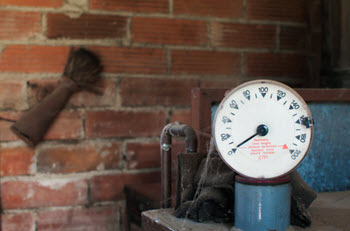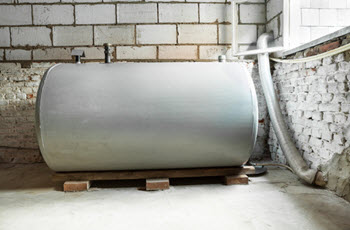Factors To Consider When Upgrading Your Fuel Oil Tank
 One of the primary tasks of a responsible owner is always to think ahead. Emergency situations could spring up at any time. Therefore, you should anticipate any home comfort issues, including the repairs and maintenance of your equipment such as your heating oil system.
One of the primary tasks of a responsible owner is always to think ahead. Emergency situations could spring up at any time. Therefore, you should anticipate any home comfort issues, including the repairs and maintenance of your equipment such as your heating oil system.
If you only recently moved into a new home, you might not have had the time to check your oil tank or oil heating system yet. As the winter months are fast approaching, you will need to turn on your heating system soon.
One of the major components of your heating system is your fuel oil tank. You wouldn’t want to deal with a situation where you run out of fuel oil in the middle of the winter. This situation is frustrating and a health hazard.
Weather conditions can arise during the winter that could mean that you’ll be stuck indoors for an extended period. Refilling your tank during severe weather can be next to impossible. In some cases, you will have to wait a few days or a week to have your oil tank filled again. Therefore, it is vital to have an oil tank that can accommodate your heating needs.
Finding an appropriate oil tank size is the first step when you are thinking about purchasing a new oil tank. Knowing the oil tank size means you can calculate the amount of oil you need to buy. Check your tank. If it’s old and outdated, then purchasing a new oil tank that will best fit your consumption needs is a good idea.
Lehighton Heating Oil Companies Near Me: Oil Tank Replacement Tips
 Heating oil is used to provide heat in many homes. The U.S. Energy Information Administration reports that an estimated 6 million households use heating oil as their primary source of heat. A small percentage of that number uses heating oil to heat water. Still, heating oil is used primarily to heat a home’s indoor environment.
Heating oil is used to provide heat in many homes. The U.S. Energy Information Administration reports that an estimated 6 million households use heating oil as their primary source of heat. A small percentage of that number uses heating oil to heat water. Still, heating oil is used primarily to heat a home’s indoor environment.
Heating Oil Consumption Levels
The location or region of your home impacts your heating oil consumption. The season also has a significant effect. For instance, the highest level of consumption is during the spring, fall, and winter. The Northeastern United States has the highest level of heating oil use. On the other hand, Western parts of USA is where you can find the lowest heating oil consumption levels. The climates between the two coasts are significant contributors to why there is such a vast difference in oil consumption.
If you live in the Northeastern part of the US, you most likely use heating oil as your primary heat source. Therefore, it is vital for you to understand and know more about your household’s heating needs. As discussed above, you need to find out what oil tank size you should purchase for your home.
There are several factors you need to consider when it comes to your home’s heating oil consumption. Below, you will find a list of factors that can assist you when you are looking to purchase the right-sized tank for your home.
Find out how much fuel oil your oil tank can hold: Unfortunately, older tanks do not come with gauges. Without a gauge, it is difficult to know how much oil is left in your tank. Consequently, you will need to calculate the amount of fuel oil in your tank manually. We will explore this topic later.
Know how much fuel you need to buy: Knowing how much fuel that you require is vital especially during the winter. When you have an idea of how much fuel oil you need to buy, then you can budget your money accordingly. Planning means that you will not suddenly run out of fuel oil in the middle of winter.
Learn about your household’s heating oil consumption: When you understand how much fuel oil you use, you can become a more conscious consumer. This way, you will also learn how to conserve heat when there is an opportunity.
Prevent your home from running out of heating oil: Running out of fuel oil in the middle of winter is a hassle. But most importantly, it is a health and safety risk. Therefore, it is essential to know your oil tank size. This way, you won’t run out of heating oil, and you can avoid this dangerous situation.
Getting An Upgrade to Your Existing Home Oil Tank
There are many things to consider when you are purchasing a new heating oil tank. However, don’t let this information overwhelm you. Firstly, you need to ask yourself why you need to buy a new heating oil tank. The reason will be of significant help to when looking for the right-sized tank to replace your current one. Here are a few reasons why you might buy a new oil tank:
- Your existing tank is outdated. An old oil tank may also be deteriorating.
- Your household’s heating needs have changed. For example, the number of people in your family may have changed. This situation may lead to the increase or reduction in the amount of heat that you require.
- You want to benefit from the economies of scale. A larger tank translates to a lower cost per gallon.
If your family has doubled in size, you certainly need to buy a larger tank. There are more rooms to heat when there are more people in your family. You may also want to upgrade your current home oil tank for safety reasons. Once you know the reason why you are upgrading your existing oil tank, you will have an easier time to choose the oil tank that best fits your needs.
Popular Oil Tank Sizes
 One of the first thing you need to know about your oil tank is its measurements. You also need to know which size options are available. Keep in mind that your oil tank’s capacity equals the amount of fuel oil that you will need to fill your tank. Gallons is the metric of measurement used to measure residential oil tanks.
One of the first thing you need to know about your oil tank is its measurements. You also need to know which size options are available. Keep in mind that your oil tank’s capacity equals the amount of fuel oil that you will need to fill your tank. Gallons is the metric of measurement used to measure residential oil tanks.
Furthermore, the size may also mean your tank’s width, height, and depth. These measurements are also used to determine your tank’s capacity.
Knowing the capacity of your current oil tank is vital. Modern tanks come with gauge. These gauges help indicate when you are running low on oil. However, old tanks do not have any gauges. Old tanks also do not come with labels that easily indicate their sizes. If this is the case, you need to use a measuring tape and measure your tank yourself. You also need a measuring stick or pole so you can measure your tank’s capacity.
Oil tanks have different types and come in different sizes. The smallest oil tank is at 250 gallons. On the other hand, the most massive heating oil tank is at 30,000 gallons. The residential oil tank standard size is 275 gallons.
Many smaller and above ground heating tanks are manufactured in two orientations: wide(V) and tall(H). You may see the standard 275-gallon heating tank classified as 275H or 275V. Some of the sizes of oil tanks are as follows:
- 288 gallons
- 340 gallons
- 420 gallons
- 500 gallons
- 550 gallons
- 675 gallons
- 1,000 gallons
As a general rule that most technicians follow, a house that has two to three bedrooms usually has a 275-gallon tank installed. A home with three to four bedrooms requires a larger tank, generally in the 340-500 gallons range.
What To Look Out For When Buying A Heating Oil Tank
 The size of the heating oil tank you need to buy depends on many factors. The quantity of heating oil that you will need is one of these primary factors. It may seem like it is a task that is as easy as buying gas for your car. However, since you use your vehicle on a daily basis, it is easier to determine your fuel consumption.
The size of the heating oil tank you need to buy depends on many factors. The quantity of heating oil that you will need is one of these primary factors. It may seem like it is a task that is as easy as buying gas for your car. However, since you use your vehicle on a daily basis, it is easier to determine your fuel consumption.
However, your heating oil consumption varies per year. These changes make it harder for you to be familiar with your heating oil consumption needs. In turn, you also won’t be able to accurately determine the right tank size you need in your home.
Planning and critical thinking are needed so that a homeowner chooses the right tank the first time. Here are the factors that will help select the right heating oil tank size:
- The amount of space you have: If you are looking to buy a larger tank, then you need to check if it will physically fit in the area you have. A larger tank may ensure that you do not run out of oil during the winter. However, you first need to check if you have the space for a larger tank.
- The size of your family: If you are a newlywed couple who just bought a new home, then you need to plan for your future needs. A growing family means that you need more heat than before.
- The size of your home: As previously discussed, the number of rooms can also determine the size of your heating oil tank. A smaller tank is enough to keep a one to two bedroom home warm. Whereas, a larger tank is required to heat a house that has three or more bedrooms.
- Heating consumption needs: When all of your family members are conscious consumers, then you are likely to conserve more heating oil. Also, if you and your family go away on vacation during the winter, then no one will be at home. This situation means that no one will be using your heating oil system. In turn, you will have lower heating oil needs.
- Emergency situations: The Northeastern weather is unpredictable. You and your family might find yourself trapped indoors due to a snowstorm. Hence, a 30% leeway on your heating oil is needed.
Installing Your New Oil Tank
 Knowing the heating oil consumption needs of your household gives you a better idea of the right tank size for you. This information will significantly help you when you call a trusted heating oil provider. A professional will help you in every step of the way, from the purchase to the installation process.
Knowing the heating oil consumption needs of your household gives you a better idea of the right tank size for you. This information will significantly help you when you call a trusted heating oil provider. A professional will help you in every step of the way, from the purchase to the installation process.
Professional heating oil tank technicians know how essential safety is. Therefore, they will ensure that they install your tank in a safe and accessible place. Experts know that a solid foundation or base is needed to avoid dangerous oil leaks. They also take into consideration specific climate hazards. After all, a sudden drop in temperature poses a freezing risk to your heating oil system. Professionals ensure that they use standard industry protocols to prevent these risks.
When you need to find a reputable supplier in your area, search for “home heating oil companies near me” or “fuel oil delivery near me”. This way, you can ensure that you find the best heating oil price per gallon while receiving high-quality service from licensed and friendly professionals.
Getting Your Old Oil Tank Removed
When you install a new tank, it includes the safe removal of your old and outdated oil tank. If you have an underground tank, professional services are necessary for its proper removal and disposal. Remember, some heating oil companies offer removal and installation services. Whereas, others specialize in removal and disposal only.
Because old underground oil tanks pose safety risks, it is mandated by law that you should hire a professional to remove it safely.
Expert heating oil technicians have sufficient tools and certifications to handle the whole process correctly. These professionals take your old tank out of your hands, and they make sure that these old tanks are disposed only at a qualified disposal and recycling locations.
Conclusion
When you need to install a new heating oil tank or you need fast and reliable fuel oil deliveries, contact R.F. Ohl. We offer the most affordable heating oil prices and you can count on us to provide you with friendly and professional service. Be sure to contact us today.
Some of the areas we service include Ashfield, Jim Thorpe, Lehighton, Parryville, and these zip codes: 18212, 18229, 18235, 18244 as well as all surrounding areas in the Lehigh Valley, Pennsylvania.
